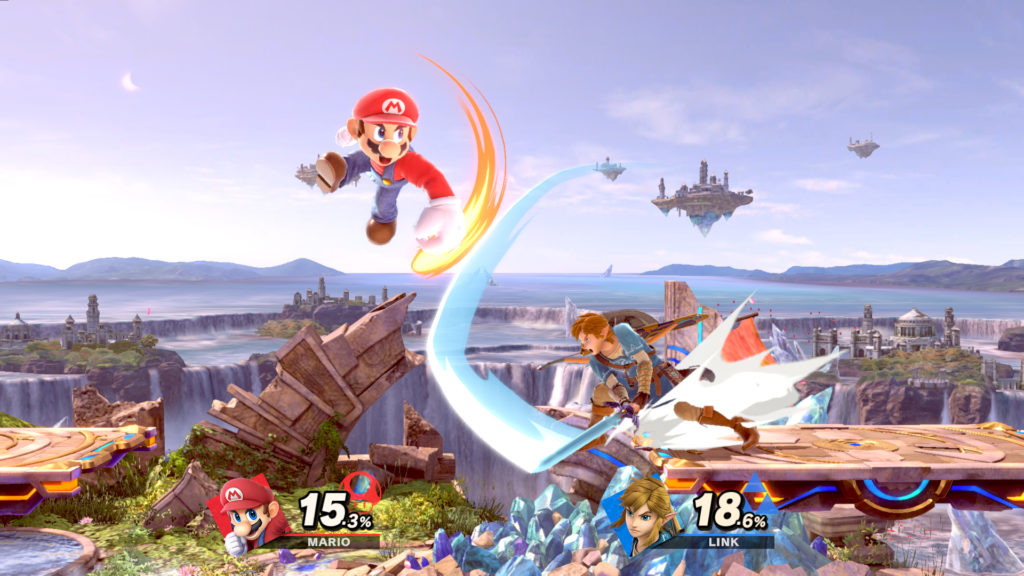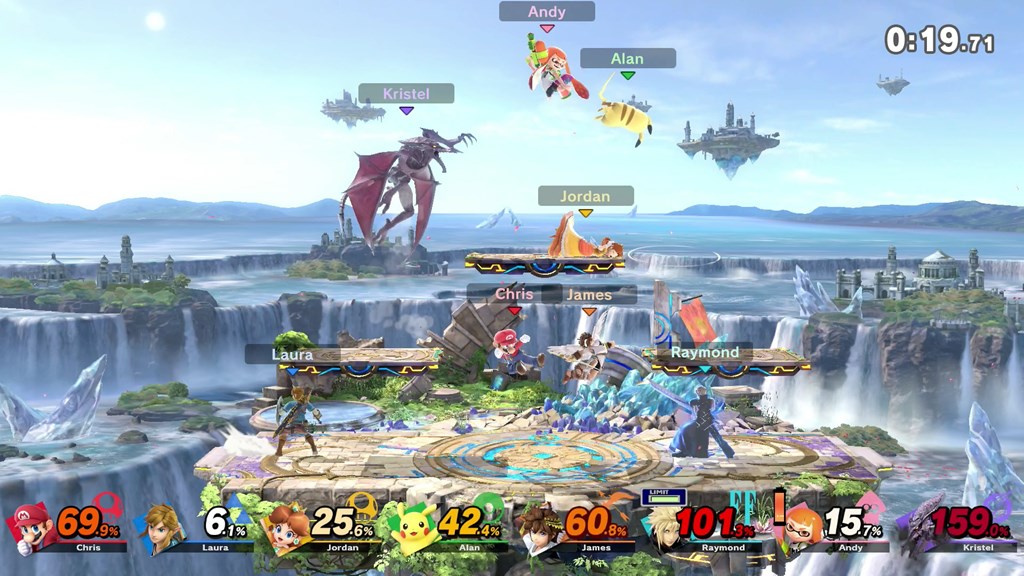Super Smash Bros is the perfect video game for college students. Whether you’re a pro gamer or a newcomer to Smash, anyone can pick up a controller and start mashing buttons. I made a ton of friends first year just from hanging around the couch in my House lounge and meeting people who pulled up to play casual 8-Player Smash. This game has also lent itself to more competitive scenarios — intense 1 vs. 1 tournaments or 4-Player battles where the bottom 2 players switch off with those waiting to play. In this blog post, I want to talk about how Smash’s 4-Player and 8-Player modes create these distinct affective experiences.

The original 4-Player mode in Super Smash Bros offers co-op gameplay that often results in a competitive atmosphere from the interpersonal relationship between players. While the standard 4-Player mode doesn’t feature any built-in mechanics dictating who switches on or off in between rounds, many friend groups create informal rules. These include: the first player to die or the player with the least kills switches off. While absent from the game’s code, similar to the arcade game Indy 800, the limitation on active players and the pressure of spectators creates a multiplayer affective experience of competition that intensifies the gameplay. This intensity, however, can be off-putting or intimidating for beginners.

While the 4-Player mode is often conducive for competitive experiences, the 8-Player mode can create a more casual experience. First introduced in Super Smash Bros. For Wii U, the 8-Player mode expands the allowed number of active players to 8, as the name suggests. By expanding the number of active players, this mode decreases the affective experience of competition and pressure. On the flip side, however, by decreasing the pressure to perform in front of spectators to keep your place in the game, this mode is also more newcomer friendly. Although the game mechanics don’t differ between the 4 and 8-Player modes, more players means more clustering and general chaos in the game. As a result, personal skill matters less and button mashing is encouraged. The 8-Player mode then creates more welcoming environment where more experienced players can play with and teach new players. In this way, the contrast in experience between 4-Player and 8-Player modes in Smash demonstrates the affective impact of the number of players in video games.

I find Smash’s flexibility as a game very intriguing. I enjoyed how you talked about how it has both competitive and casual aspects to it. Smash is a game that I also find myself playing with a group of friends as it’s very fun and adaptable to many skill levels. For instance, a good player can easily find themselves losing in the chaos of 4-8 player Smash games. But there’s also the other side of the coin where a veteran player might become frustrated that they lose in such a scenario or even make it unfun for the other players by easily knocking them out one by one in a competitive manner when they are trying to play casually. I also like how you mentioned the rules and many different ways people can enjoy smash. Personally when I was wonder my friends and I would only turn on the pokeballs and battle each other while we would scramble to grab as much pokeballs as we could to gain an advantage.
When I first played Smash in 8-player mode, I found it so confusing to navigate with the crowded screen. I was also playing with a lot of people who had never played Smash before, and they all had a more erratic play style than I was expecting. I find it interesting how you connect the chaos of 8-player mode to a more welcoming environment. I found it a lot more annoying, but I think my friends who hadn’t played Smash before found it more fun, especially since it was a lot easier to avoid being in last place. Since we were also playing with the rule that last-place switched out for another person, this mode also made it easier for the less experienced players to stay in more often, since they had a better chance of not getting last place than in a 4-player game.
I really enjoy Smash as a party game and I forgot that it introduced an 8 player mode (the local switch is limited by the number of controllers it has). Even though my gut reaction was that your conclusion was counterintuitive, I wholeheartedly agree. More players and greater chaos makes Smash a much more approachable game. Many people are scared off because there are always a couple that are really good, and 8 player is a great way of leveling out the playing field so that less experienced or even first time players can jump in
I think your observations about 8-player Smash are really interesting. I think that there’s a compelling contrast when you mention how, the more players there are and the more chaotic it gets, then it’s accessible for newcomers. You would think that a more chaotic state of play would mean newcomers would have more trouble, but I agree with you that this mode encourages button mashing more than actual skill because of the sheer chaos at hand. I guess I’d say I’m a decent Smash player, and I’ve been in the game for over a decade. When I play with a newcomer in 4-player Smash, they usually get out rather soon, and I’m able to focus in on my skills and eliminate them. However, 8-player Smash is simply way too chaotic for me to employ an actual strategy. While I’m typically a Young Link main (sorry), I’ll transition over to Ike or Bowser when we’re doing 8-Player Smash because of their super strong attacks.